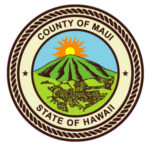
Jul 15, 2020 | Sustainability
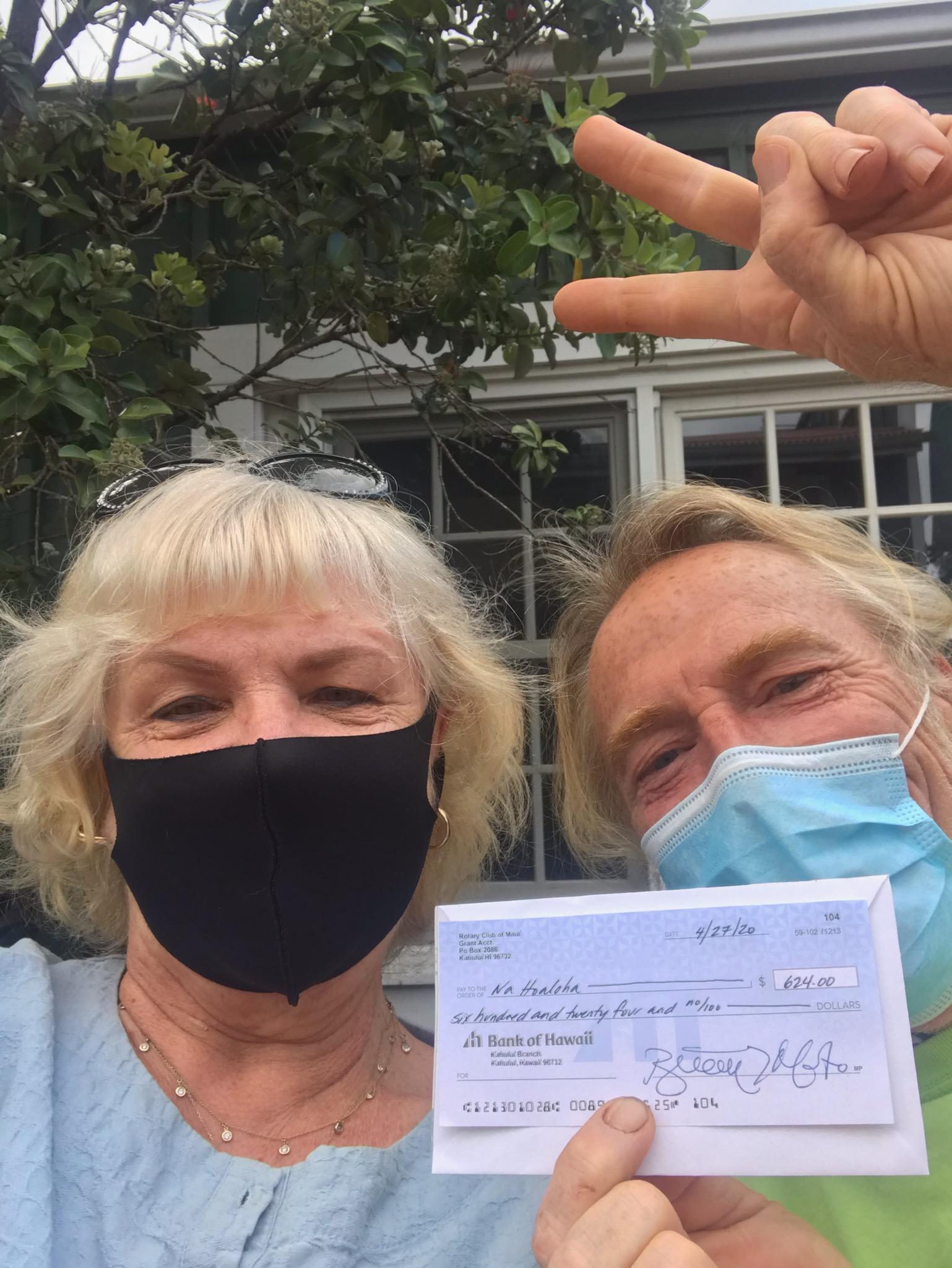 Rotary International District 5000 announced the award of $31,000 in grants to Hawaii Rotary clubs to support COVID-19 relief projects. The Hawaii District 5000 funds come from dues and donations from club members across the islands. Funds that were budgeted this year for conferences, training and travel have been re-allocated to these COVID-19 grants. The clubs are using these grants to work with Hawaii nonprofit community partners to provide COVID-19 relief.
Rotary International District 5000 announced the award of $31,000 in grants to Hawaii Rotary clubs to support COVID-19 relief projects. The Hawaii District 5000 funds come from dues and donations from club members across the islands. Funds that were budgeted this year for conferences, training and travel have been re-allocated to these COVID-19 grants. The clubs are using these grants to work with Hawaii nonprofit community partners to provide COVID-19 relief.
“Rotary is about helping people in our local communities,” said Eric Kaler, District Governor of Rotary in Hawaii. “We are mobilizing and re-deploying funds to enable our Hawaii clubs to do even more to provide relief for people impacted by the COVID-19 pandemic.”
In addition to the grant, the clubs collectively contributed a supplemental $3,600 for projects. The Rotary Club of Lahaina Sunrise procured and assembled masks and other personal protective equipment for medical workers on Maui. The masks were sourced from Min Plastics, a Honolulu company with more than 70 years of fabrication experience, who began producing face shields in response to the COVID-19 pandemic.
Dr. Bridget Bongaard, Rotary Club of Maui President, said, “Our club has successfully transitioned from being a traditional club that meets at a local restaurant each week, to one that is able to meet and plan using Zoom conferencing. We choose a different community project each month that we all support and serve. Recently, we delivered a grant check to Na Hoaloha, a nonprofit that provides essential services to the elderly in our community, such as transportation, and currently a virtual volunteer program as well. Na Hoaloha used the funds to provide nutritious hot meals for their kupuna. Rotary supports numerous organizations like this in the community.”
Rotary clubs across the islands are staying actively connected during the pandemic using online meetings, social media, and email. Club members are volunteering to sew face masks, shop for supplies for kupuna, deliver food, provide financial information, and support food banks and programs in their local communities. Bongaard concluded, “It is so important to have the support of community organizations like Rotary in the face of this pandemic.”
Rotary members have created Facebook groups for “Care-mongering” on their islands. These groups are open to the public and serve to connect people and resources for COVID-19 pandemic assistance.
Bridget Bongaard, President, Rotary Club of Maui
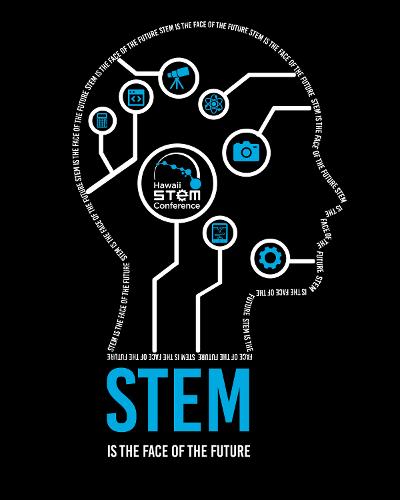
Jul 8, 2020 | Education, Stemworks
 Maui Economic Development Board’s STEMworks™ Hawaii program presented the first-ever 2020 Virtual STEM (science, technology, engineering, mathematics) Conference. The agenda focused on developing 21st-century skills for future careers. Teachers and over 200 students exercised leadership, communication, and collaboration by engaging in hands-on STEM activities that involved problem-solving, scientific concepts and geospatial technologies.
Maui Economic Development Board’s STEMworks™ Hawaii program presented the first-ever 2020 Virtual STEM (science, technology, engineering, mathematics) Conference. The agenda focused on developing 21st-century skills for future careers. Teachers and over 200 students exercised leadership, communication, and collaboration by engaging in hands-on STEM activities that involved problem-solving, scientific concepts and geospatial technologies.
“The 2020 Hawaii STEM Conference successfully moved to a virtual platform this year,” said Katie Taladay, STEMworks™ Program Manager. “We kicked off the three-day event with five industry presenters, and a Microsoft keynote message of inspiration for our students. In addition to the main event, 27 students participated in the STEMworks™ first virtual design challenge hackathon hosted on BizzyB. In this fast-paced challenge, students learned about Malama Maunalua’s mission to help improve water quality in their ahupua’a by growing oysters to filter local waterways. Each of the five teams impressed the four judges with their innovative designs for sustainably constructed oyster cages. We are thankful for all our participants, sponsors and speakers.”
Additionally, students competed in the 2020 STEMMY Award challenges designed to put their skills and creativity to the test. Jacob Gamble from Kalama Intermediate School won the Game Design Competition. Jazmyne Viloria from Maui High School won the Photography Competition. Winners from Maui Waena Intermediate School included Jacelyn Yun for the What’s Your Jam? Competition; Zoe Zane, Kamri Cruz and Sienna Jolie Racoma for the Leave Your Mark-et Design Competition; and Sienna Jolie Racoma and Kamri Cruz for the T-Shirt Design Competition.
“Our T-Shirt design is of a side profile, with an outline of the words ‘STEM is the Face of the Future’,” Cruz and Racoma explained. “It also includes circles with images of the different aspects of STEM. All of the individual symbols come together to make the whole person, which is portrayed as the side profile of the face.”
Jennifer Suzuki, Maui Waena STEMworks™ AFTERschool Coordinator added, “I am proud of my students for staying focused and continuing to work despite school closures. We appreciate STEMworks™ for giving our students the opportunity to stay engaged and productive in these challenging times.”
Our t-shirt design represents how future generations will be influenced by STEM.
Sienna Jolie Racoma and Kamri Cruz, 2020 STEMMY Award T-Shirt Design Winners, Maui Waena Intermediate School
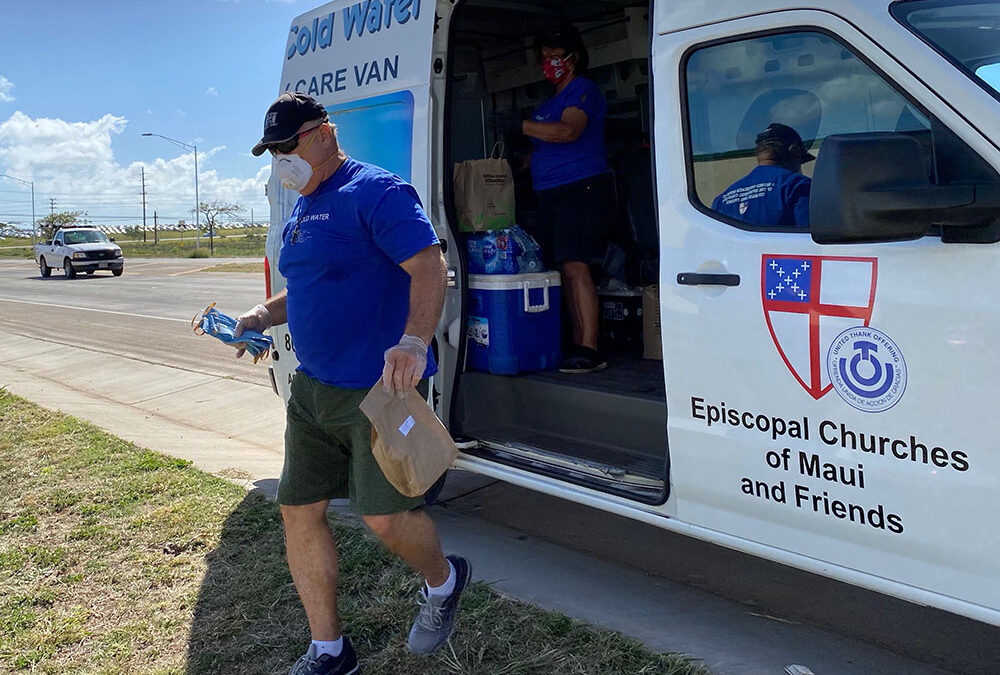
Jul 1, 2020 | Community
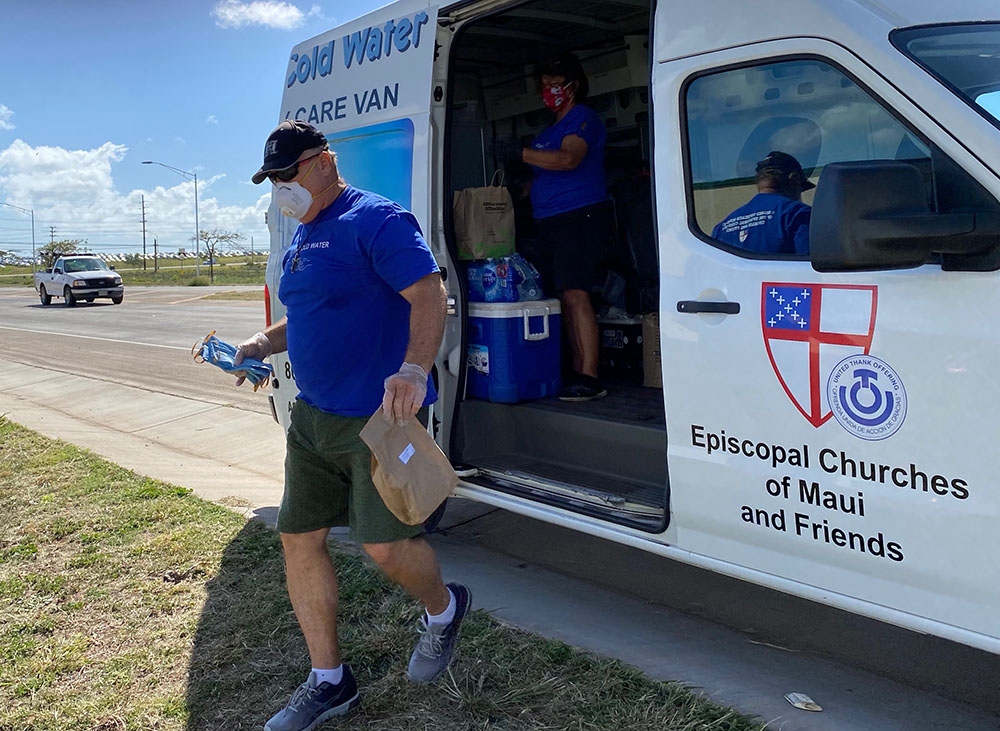
A Cup of Cold Water (ACCW), a shared outreach ministry of the Episcopal Churches of Maui and Friends, is looking to restart operations and begin with weekly mission runs on Wednesdays in the Central Maui area. ACCW’s roving care van will serve the areas of Central Maui where the larger homeless populations are gathered, including portions of old Wailuku Town, Beach Road, Kanaha, Kahului Industrial, and areas around and near the Kahului Salvation Army.
“Our mission continues to offer water, nutrition, hygiene, masks, and comfort to Maui’s neediest citizens, along with offering spiritual food, hope and referrals for those who desire it,” said Deb Lynch, ACCW President. “The South and West Maui mission runs are currently still on hold until further notice. ACCW has also supplied other on-going outreach programs, such as Maui Mental Health Kokua, Hale Kaukau, and the Salvation Army, with perishable food items, hygiene and first aid.”
ACCW began their direct services mission in 2013 as a no-salary, all-volunteer mission that does not accept any government grants or funding. It has its own independent supply chain of water, non-perishable food, hygiene, clothing, first aid and other needs. In 2019, they made almost 10,000 homeless service contacts through their weekly mission runs to Central, South, and West Maui.
“Thanks to our core of volunteers from within the community, and our wide range of supporters, the program has grown into a very loved outreach ministry for the island,” Lynch said. “Van drivers and riders, storage and distribution room organizers, administrators, donors, and other volunteers, are a shining example of how dedicated people bring compassion into the public arena to serve those in need. During this time of great need, we encourage everyone to vigorously support local frontline charities with monetary or food donations. For example, support is always needed at the Maui Food Bank, the Salvation Army, Feed My Sheep, Family Life Center, Hale Kaukau of St Theresa’s Catholic Church, Ka Ohana Kitchen of Good Shepherd Episcopal Church, Maui Rescue Mission, Ka Hale A Ke Ola, and food pantries. Every outreach ministry of our greater community could use help.”
COVID-19 has greatly increased the need for supplies for the homeless. We especially thank the community for their continued support and donations. Stay safe and healthy.
Deb Lynch, President, ACCW

Jun 24, 2020 | Innovation
 Ka Ipu Kukui Fellows is a nonprofit community-based program created to identify and develop Maui’s future leaders. To date, over 150 accomplished young professionals have graduated from the year-long program. The Fellows are a diverse cross-section of residents drawn from business, government, academia and nonprofit organizations. In January, the group took part in Maui Economic Development Board’s (MEDB) Project Weekend. The preparation for this weekend began with a 60-second pitch exercise on Friday evening.
Ka Ipu Kukui Fellows is a nonprofit community-based program created to identify and develop Maui’s future leaders. To date, over 150 accomplished young professionals have graduated from the year-long program. The Fellows are a diverse cross-section of residents drawn from business, government, academia and nonprofit organizations. In January, the group took part in Maui Economic Development Board’s (MEDB) Project Weekend. The preparation for this weekend began with a 60-second pitch exercise on Friday evening.
“We wanted to give the Fellows some tips and rehearsal for their pitches,” said Frank De Rego, Jr., MEDB Director of Business Development Projects and facilitator. “It sets them up for an intense weekend with the fellows working in teams through all the various aspects of project development to better address Maui Nui’s challenges.”
Coaches, with their backgrounds as business and community leaders, mentored the project teams the following day. The weekend culminated on the Sunday afternoon with the teams presenting a 5-minute pitch presentation to a panel of judges comprising of accomplished Maui Nui decision makers and influencers. A winner was announced although the emphasis of the weekend was on the learning process and for the Ka Ipu Kukui Fellows to get an immersive understanding of developing a project from start to finish.
The winning Project Weekend team included project creator Ashley Takitani-Leahey with Riley Coon, Teana Kaho’ohanohano, Jeeyun Lee and Carrissa Holley. “Project Weekend was intense but incredible,” said Holley. “I got to spend time with an amazing team. Combining all our skills, we learned so much from each other. We are all grateful to have such an amazing and supportive team here at MEDB who was there for us through thick and thin.”
Judge Brittany Heyd, cofounder of Mana Up, added, “The participants had their own angles and expertise on how to support Maui and solve problems that they foresee in the future. It was inspiring to see them use their own resources and work as a team to get the job done. We need our young leaders to step up with more innovative ideas for the future.”
With the social distancing regulations taking place on Maui for an indefinite time, Ka Ipu Kukui is looking at alternatives for the current and new cohort. Visit https://kaipukukui.com for more information.
The Fellows awareness of diverse topics and perspectives amazed the judges who had a difficult time choosing the winners.
Gerry Smith, MEDB Director of Business Development
Jun 17, 2020 | Community
Like other communities across the country, Maui County and its residents have been affected by the anger, grief and hurt caused by recent events in Minneapolis, Georgia, Louisville and elsewhere, and the resulting civil unrest. ‘The knee on the neck” is an apt metaphor for the anguish and fear that learned hatred and bigotry – sometimes casual, sometimes coded – cause for so many of our fellow citizens.
MEDB joins in condemning the systemic racism evidenced by these events. We stand with those raising their voices, protesting injustices, and demanding constructive change. We cannot achieve social justice when members of our communities are oppressed on the basis of race, gender, or ethnicity.
MEDB is committed to inclusivity, diversity, and the power of education and community engagement, especially for the underrepresented and those who feel disenfranchised. We work towards tackling the inequities that exist in so many aspects of our society.
We see hope for the future in our young people especially, who have articulated their dissatisfaction, here as elsewhere, with the status quo on issues ranging from oppression and social injustice to climate change.
We are truly blessed to live in a place of rich culture, natural beauty and abundance, but we must all acknowledge the importance of inclusion and equity of access for shared prosperity while recognizing our own particular history of past injustice and cultural oppression.
John Harrisson, Program Director, MEDB, and father of two African-American young men
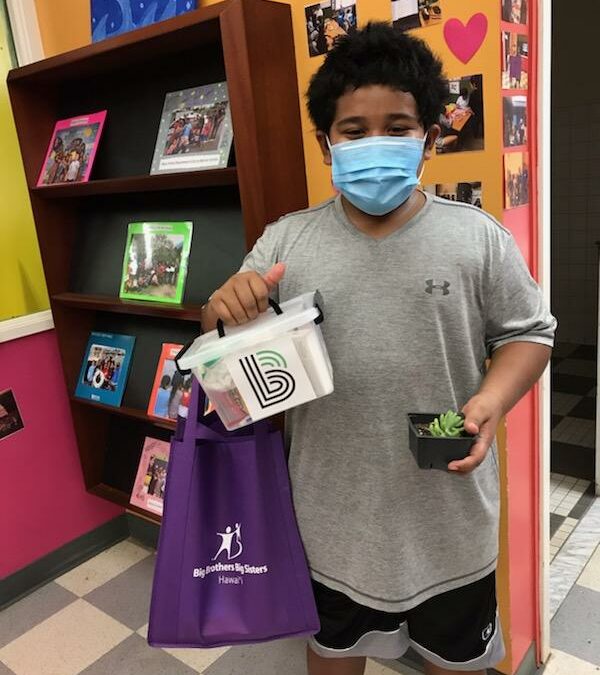
Jun 10, 2020 | Sustainability
Big Brothers Big Sisters (BBBS), the program that makes a big difference by matching children facing adversity with older role models in one-to-one relationships, is adapting to the COVID-19 pandemic. While bringing people together in person to go out and share activities is their main goal, they cannot do that at this time. BBBS wants everyone to be safe, and to their surprise, their families of matches have embraced the moment and are having lots of fun connecting virtually.
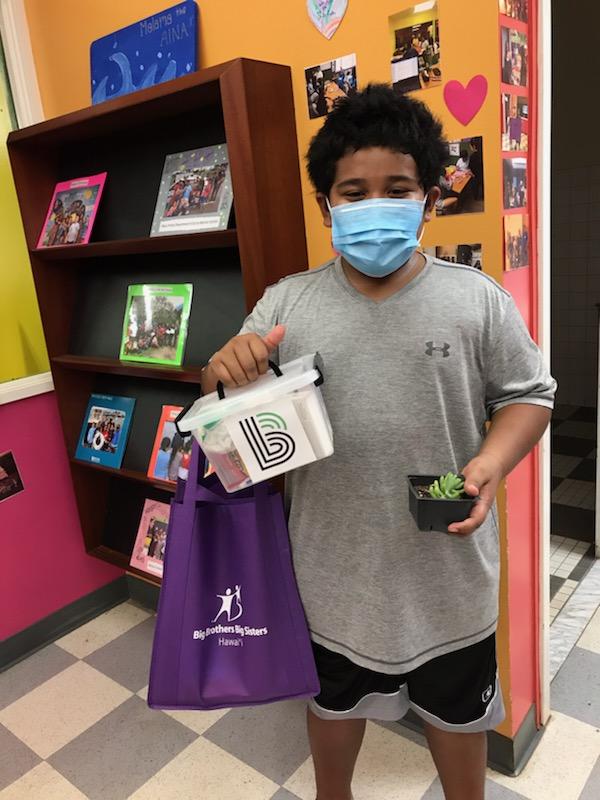
“During this very challenging and uncertain time, our mission remains to build and support one-to-one relationships, and to ignite the biggest possible future for our youth,” said Courtney Ikawa, Maui BBBS Regional Director. “These are really scary times for all of us, but especially for the children. Since the stay-at-home orders were enacted on Maui, the youth have lost access to school meals as well as resources that connected them to the outside world. Our Maui staff, working from home, have innovated our service delivery to ensure the children stay virtually in touch with their BBBS mentors.”
BBBS is serving as a hub for families by directing them to community resources and by providing virtual workshops for both the parents and volunteers. Their one-to-one matches have been meeting through phone calls, video chats, texts, and email. In fact, they have become highly creative, and went on their first virtual matches tour to visit the USS Missouri, the historic battleship anchored at Pearl Harbor.”
“We are still enrolling children and volunteers, and we are continuing to support virtual relationships during this time of social distancing,” Ikawa said. “Our program is an essential service that we must continue to provide because the young people that we serve through this pandemic are likely to bear the heaviest burdens of trauma and economic fallout. Each child and mentor is connected with one of our staff who provides ongoing coaching for the youth, training for the volunteer, and resources for the family. We continually need investment in our mission to ensure our agency remains open, which community members can do in numerous ways.”
BBBS’s youth-centered program helps children to create goals that mentors can help them achieve. For more information visit www.bbbshawaii.org
Courtney Ikawa, Maui BBBS Regional Director
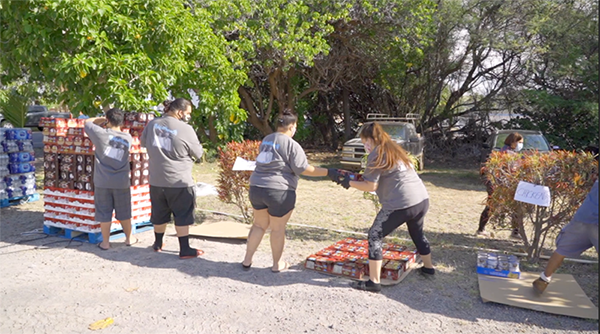
Jun 3, 2020 | Community, Small Business, Sustainability
More than 33,000 pounds of food are being distributed by the Maui Food Bank to Moloka‘i residents in need through a $20,000 contribution from the Hawaiian Electric Industries Charitable Foundation (HEICF). HEI is the parent company of Hawaiian Electric, which supplies power to Maui, Moloka‘i, Lāna‘i, O‘ahu and Hawai‘i Island. In March, the HEICF contributed $50,000 to the Hawai‘i Food Bank and pledged another $75,000 to United Way agencies in support of their efforts to assist families in need across the state during the COVID-19 pandemic. The current donation provides additional shipments to supplement Maui Food Bank’s regular monthly delivery of food to Moloka‘i. Once delivered, 19 partner agencies across the island distribute nutritious fresh food to individuals, families, children, and seniors on fixed incomes, those without shelter—anyone who is at risk of going hungry.

“During this coronavirus pandemic with many more in our communities facing hardships, the Maui Food Bank is experiencing a significant increase in requests for food assistance,” said Richard Yust, Executive Director of the Maui Food Bank. “This generous contribution from Hawaiian Electric enables much needed additional pallets of food to be shipped to Moloka‘i where food distributions are being depleted.”
Sharon Suzuki, President of Maui County and Hawai’i Island Utilities for Hawaiian Electric said, “We are grateful for organizations like the Maui Food Bank and the on-island partner agencies for maintaining this critical service throughout these uncertain times. We are all in this together and we want to help alleviate this escalating need for basic necessities in one of the most remote communities we serve.”
“ʻAʻohe hana nui ke alu ʻia! No task is too large when we come together,” said Kilia Purdy-Avelino of Alu Like, Inc., a partner agency on Moloka‘i. “Mahalo to all for working together in unity to aloha Moloka‘i with such generous donations from the Maui Food Bank, Hawaiian Electric and other companies, non-profit organizations, and even individuals. The overwhelming gratitude from the receiving families speaks volumes of what the extra Food Bank deliveries mean to our community.”
We are grateful to all the volunteers and donors helping to distribute food throughout the island to those in need.
Sharon Suzuki, President, Maui County and Hawai’i Island Utilities

May 27, 2020 | Community
Volunteers with the Nisei Veterans Memorial Center (NVMC) and Maui United Way handed out 8,000 face masks during their GivingTuesday “Be a Hero, Wear a Mask” campaign. GivingTuesday, a global generosity movement, launched GivingTuesdayNow in response to the COVID-19 pandemic. “I appreciate the effort to prevent the spread of COVID-19 in our community,” said Mayor Michael Victorino. “Our success in leveling the curve comes from members of our community working together to keep each other healthy, especially our vulnerable kupuna. Mahalo to the NVMC and Maui United Way for helping to keep Maui strong.”

The masks are part of Every1neHawaii’s Masks4All campaign. The Honolulu nonprofit successfully brought in 2 million masks, disbursing them to all islands across the State. The goal was to make the face masks available at no charge to those most in need. Free face mask distribution sites included TJs Grocery Outlet, Island Grocery Depot (Kahului and Lahaina) and Pukalani Superette. Mask giveaways were also donated to Hale Makua and Valley Isle Federal Credit Union. Giveaway volunteers included Mayor Victorino, professional surfers Kai Lenny and Ian Walsh, and members of the Maui delegation from the Hawaii State Legislature.
“This was indeed a community effort, and we are thankful to Every1neHawaii for the masks and for the support we received from all of our partners to ensure the masks got to the community,” said Deidre Tegarden, Executive Director of the Nisei Veterans Memorial Center. “We initially received 160,000 masks, which we were able to distribute through Maui United Way and other local nonprofit partners. We could not have distributed the masks so quickly if it were not for the amazing team at Maui United Way, who continually work to address Maui’s most vital needs through the impact areas of education, economic sustainability, and health.”
Tegarden added, “The NVMC, whose mission is to ignite human potential by inspiring people to find the hero in themselves, and Maui United Way joined as partners to address the pandemic and inspire people to give, advocate, and volunteer. Stay well. Follow the standard tips for safety. We will get through this together!”
The goal of NVMC and Maui United Way is to bring our community together around a common cause, such as aiding those in need during this pandemic.
Deidre Tegarden, NVMC Executive Director

May 27, 2020 | Small Business
 Robert Kawahara, from one of Maui’s largest CPA firms, Kawahara + Hu LLP CPAs, strongly believes in giving back to the community. He has presented workshops on Tax Strategies for Small Business at previous Hawaii Small Business Conferences presented by Maui Economic Development Board and supported by the County of Maui Office of Economic Development. This year the conference was cancelled; however, Kawahara is offering a newsletter with information and strategies for small businesses in the community.
Robert Kawahara, from one of Maui’s largest CPA firms, Kawahara + Hu LLP CPAs, strongly believes in giving back to the community. He has presented workshops on Tax Strategies for Small Business at previous Hawaii Small Business Conferences presented by Maui Economic Development Board and supported by the County of Maui Office of Economic Development. This year the conference was cancelled; however, Kawahara is offering a newsletter with information and strategies for small businesses in the community.
Kawahara explained, “COVID-19 has caused an unprecedented strain on our healthcare and economic infrastructure. Our federal and local governments responded with stay-at-home restrictions and significant economic stimulus. While uncertainty makes it difficult to describe a future outcome—causing anxiety in all of us—our role as CPAs is to provide some certainty to our clients so that they may make informed decisions.”
At the beginning of the pandemic, Kawahara quickly realized that his company needed to communicate effectively with clients, so they created an email newsletter. The newsletter has helped cut down on the number of calls from clients which were relatively similar in nature. Kawahara stated, “The newsletter makes the calls quicker and more to the point since the clients have a better understanding to start with. Right now, all CPAs should be doing tax returns. However, with the new economic stimulus we have been forced into learning a whole new law that affects every individual and business, while still needing to provide guidance. Our roles as CPAs have not changed because of the pandemic, only the sense of urgency for answers. Our role should still be viewed as strategic advisors and decision-makers who assist in making informed decisions.”
Kawahara advises clients to read as much as possible and then email their CPA questions in a yes-or-no format. He added, “Have patience in waiting for responses. Most importantly, realize that CPAs may not have all the answers. Guidance is changing literally by the hour. Our resources are stretched to the limit in addressing the economic stimulus. We appreciate your understanding and offer our newsletter at www.mauicpa.net.”
During this difficult time, most businesses will find relief and support from the SBA Economic Injury Disaster Loan, SBA Paycheck Protection Program, and Employee Retention Tax Credit and State of Hawaii Unemployment.
Robert Kawahara, Kawahara + Hu LLP CPA
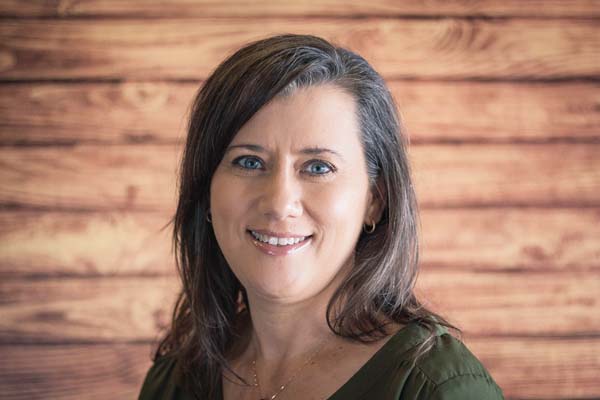
May 20, 2020 | Community
 Monique Yamashita, Executive Director of Ka Hale A Ke Ola (KHAKO) Homeless Resource Centers, Inc., has over 15 years of social service experience in Maui County. Currently, as executive director of two homeless shelters, one in Wailuku and one in Lahaina, she has developed emergency COVID-19 protocols to ensure the safety of the clients and staff. “We are committed to doing what is best to protect our guests, tenants, staff, and vendors, and to do our part to prevent the transmission of the virus,” Yamashita said. “The County of Maui recently delivered tests for us to administer to provide reassurance of wellness in both of our facilities. In addition, we are so thankful for amazing friends in our community who have blessed us with handmade and disposable face masks and shields.”
Monique Yamashita, Executive Director of Ka Hale A Ke Ola (KHAKO) Homeless Resource Centers, Inc., has over 15 years of social service experience in Maui County. Currently, as executive director of two homeless shelters, one in Wailuku and one in Lahaina, she has developed emergency COVID-19 protocols to ensure the safety of the clients and staff. “We are committed to doing what is best to protect our guests, tenants, staff, and vendors, and to do our part to prevent the transmission of the virus,” Yamashita said. “The County of Maui recently delivered tests for us to administer to provide reassurance of wellness in both of our facilities. In addition, we are so thankful for amazing friends in our community who have blessed us with handmade and disposable face masks and shields.”
Dedicated to serving the needs of the homeless and hungry on Maui, KHAKO has been providing emergency food and housing for over 30 years. They empower those in need to take responsibility for their own lives and they call on the community to assist in these actions. Yamashita reflected, “We are truly blessed with great community partners. Our approach goes beyond providing basic shelter and sustenance for homeless persons. Through a series of structured programs and services, we focus on instilling the skills, knowledge and experience necessary to support self-sufficiency and promote positive, healthy life choices.”
With all of the COVID-19 concerns, KHAKO is still in operation, bringing in new families and individuals who are experiencing homelessness as well as working with current clients to assist them with obtaining permanent housing. “While the world may be at a standstill, life carries on at our shelters and we are still working to end the cycle of homelessness,” said Yamashita. “On any given day, the KHAKO staff works to create stability in lives and to ensure success in permanent housing. There is already a lot of pressure for the clients, and COVID-19 is not making things easier, but we will continue to assist those in need.”
I do this work because everyone deserves a dignified and healthy quality of life. Poverty is cruel and no one should be without a home because of it.
Monique Yamashita, Executive Director, KHAKO Homeless Resource Centers, Inc.

 Rotary International District 5000 announced the award of $31,000 in grants to Hawaii Rotary clubs to support COVID-19 relief projects. The Hawaii District 5000 funds come from dues and donations from club members across the islands. Funds that were budgeted this year for conferences, training and travel have been re-allocated to these COVID-19 grants. The clubs are using these grants to work with Hawaii nonprofit community partners to provide COVID-19 relief.
Rotary International District 5000 announced the award of $31,000 in grants to Hawaii Rotary clubs to support COVID-19 relief projects. The Hawaii District 5000 funds come from dues and donations from club members across the islands. Funds that were budgeted this year for conferences, training and travel have been re-allocated to these COVID-19 grants. The clubs are using these grants to work with Hawaii nonprofit community partners to provide COVID-19 relief.








 Robert Kawahara, from one of Maui’s largest CPA firms, Kawahara + Hu LLP CPAs, strongly believes in giving back to the community. He has presented workshops on Tax Strategies for Small Business at previous Hawaii Small Business Conferences presented by Maui Economic Development Board and supported by the County of Maui Office of Economic Development. This year the conference was cancelled; however, Kawahara is offering a newsletter with information and strategies for small businesses in the community.
Robert Kawahara, from one of Maui’s largest CPA firms, Kawahara + Hu LLP CPAs, strongly believes in giving back to the community. He has presented workshops on Tax Strategies for Small Business at previous Hawaii Small Business Conferences presented by Maui Economic Development Board and supported by the County of Maui Office of Economic Development. This year the conference was cancelled; however, Kawahara is offering a newsletter with information and strategies for small businesses in the community.
